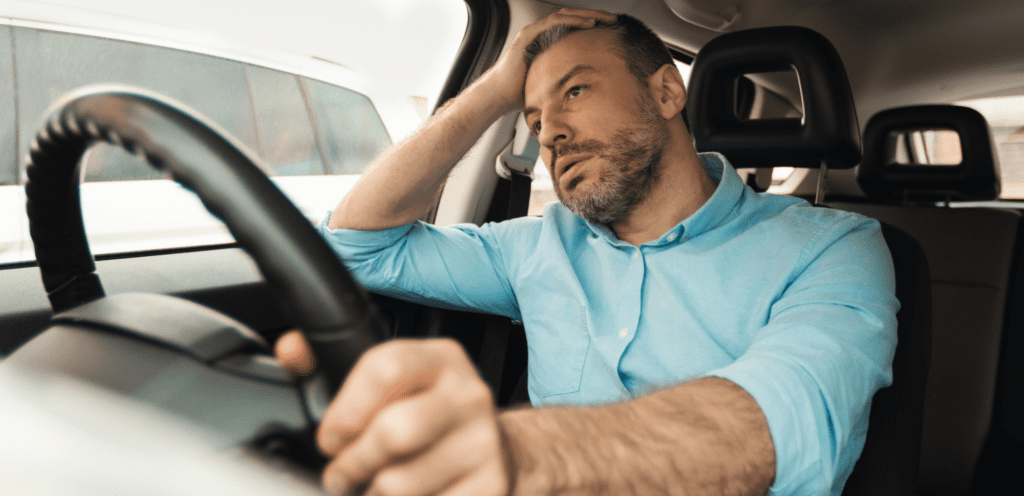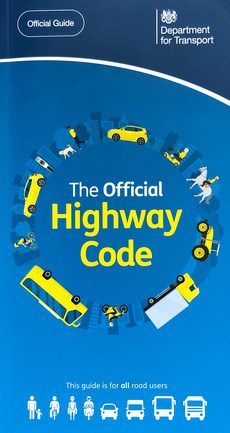
Navigating the roads of the United Kingdom can sometimes feel like deciphering an ancient script. With the Highway Code as the guide to safe and responsible driving, it’s crucial for drivers to have a clear understanding of its rules.
However, amidst the plethora of directives, there are a few Highway Code rules that consistently sow seeds of confusion among motorists.
Whether it’s the nuances of overtaking or the proper use of headlights, misunderstanding these rules can not only lead to frustration but also compromise road safety.

This article aims to shed light on the top five Highway Code rules that leave drivers scratching their heads. By clarifying these rules, we hope to dispel myths, foster safer driving practices, and perhaps even save you from an unwelcome fine.
Clarifying Confusing Highway Code Rules
Avoid Undertaking
General Misconception
One of the most common areas of confusion lies in the practice of undertaking, or overtaking another vehicle on its left side.
A topic of much debate among drivers, many are left wondering: is undertaking a driving offence that could lead to a conviction?

What the Highway Code Says
Rule 268 of the Highway Code advises drivers, “Do not overtake on the left or move to a lane on your left to overtake”. At first glance, this might suggest that undertaking is strictly prohibited.
However, the Highway Code also provides exceptions, allowing passing on the left in congested conditions where adjacent lanes of traffic are moving at similar speeds.
Furthermore, it’s permissible to undertake when a vehicle is waiting to turn right, and there is room to safely pass on the left.
The Reality of Undertaking
So, what’s the bottom line? Undertaking is not categorically a punishable offence. It’s advised against due to the potential safety risks, except in specific scenarios outlined by the Highway Code.
Nevertheless, if undertaken carelessly or recklessly, it could be construed as careless or inattentive driving, leading to penalties.
Thus, while undertaking in certain conditions is acceptable, it requires careful judgement and an understanding of the specific exceptions to ensure legality and safety.
Flashing Headlights
Common Misuses
Flashing headlights is another topic fraught with misunderstanding. Originally intended as a means for drivers to communicate their presence to others, this signal has evolved in the driver lexicon to include gestures of thanks, warnings about speed traps, or alerts about accidents ahead.
Highway Code Guidance
According to Rule 110 of the Highway Code, the sole purpose of flashing headlights is to alert other road users of your presence.
Using this signal for any other reason, such as warning of speed traps, is not only against the Highway Code but can also be liable for a fine up to £1,000.
Potential Consequences
Despite the rarity of being fined for a friendly ‘thank you’ flash, it’s a practice that diverges from the intended use of the signal and could potentially mislead other drivers.
The takeaway here is to stick to the Highway Code‘s guidance on flashing headlights to avoid miscommunication and the slim chance of an unwanted fine.

Eating or Drinking Whilst Driving
Driver Assumptions
Many drivers assume that grabbing a quick snack or sipping a drink while behind the wheel is harmless, especially during long drives where energy levels might start to wane.
The logic seems straightforward: if you’re in control and still paying attention to the road, where’s the harm?
Highway Code on Distractions
However, Rule 148 of the Highway Code stresses the importance of avoiding distractions to maintain concentration.
Alongside listing potentially distracting activities like arguing with passengers or reading maps, eating and drinking are also highlighted.
The principle here is that anything which could take your focus away from the road is a risk not worth taking.
Legal Implications
It’s worth noting that, technically, you won’t be directly fined for just eating or drinking while driving. The act itself isn’t punishable.
Yet, if this leads to what’s considered careless driving, you could be looking at an on-the-spot fine of £100 and three points on your licence.
The key takeaway? If you must eat or drink, ensure it doesn’t detract from your primary task: driving safely.
Double White Lines – Overtaking Cyclists
The Overtaking Dilemma
One of the most puzzling scenarios for drivers arises when they encounter a cyclist on a stretch of road marked by double white lines, particularly when the line closest to them is solid.
The Highway Code prohibits crossing these lines to overtake vehicles, but does this rule also apply to cyclists, who typically travel at much lower speeds?
Clarification from the Highway Code
Rule 129 provides much-needed clarity on this matter. It states that while you must not cross or straddle the solid white line, exceptions are made for overtaking stationary vehicles, horses, and, crucially, cyclists travelling at 10 mph or less.
This exception acknowledges the impracticality of following a slow-moving bicycle for prolonged distances and facilitates safer overtaking manoeuvres.

Safe Overtaking Practices
Despite this allowance, drivers are urged to exercise caution and judgement when overtaking cyclists.
The overriding principle is to ensure the manoeuvre can be completed safely and without causing the cyclist to feel endangered.
Giving as much space to cyclists as you would when overtaking another car is not just considerate; it’s a practice that enhances road safety for all.
Always Give Priority to Buses
Misunderstood Courtesy
A common belief among drivers is the notion that giving priority to buses, especially when they’re signalling to pull away from stops, is a legal requirement.
This assumption likely stems from a general encouragement to facilitate smoother traffic flow and reduce delays for public transport.

What the Highway Code Recommends
Rule 223 of the Highway Code suggests giving priority to buses, coaches, and trams signalling to pull out.
However, it’s crucial to understand that this is a recommendation rather than a legal mandate. Like any other vehicle, buses must signal and merge into traffic safely, waiting for a suitable gap.
Reasons for Courtesy
Despite the lack of legal obligation, there are practical and courteous reasons to give way to buses. Doing so can help reduce congestion and minimise delays for passengers.
Moreover, it fosters a more cooperative and respectful driving environment, contributing to smoother traffic flow and potentially preventing accidents.
Conclusion
Demystifying these top five Highway Code rules sheds light on the correct practices and the rationale behind them.
Understanding the nuances of these rules not only ensures compliance but also promotes safer and more considerate driving habits.
As drivers, our responsibility extends beyond merely following rules; it encompasses an ongoing commitment to road safety and courtesy towards all road users.
Through this exploration, we hope to have clarified some common areas of confusion and encourage drivers to revisit the Highway Code as a valuable resource for safe driving principles.
Whether it’s giving way to buses or correctly overtaking cyclists, each action we take on the road contributes to a safer driving environment for everyone.
Remember, safe driving isn’t just about avoiding fines or penalties; it’s about protecting lives and making the roads safer for all.
Stay informed, stay safe, and let’s all contribute to a more understanding and respectful driving culture.



